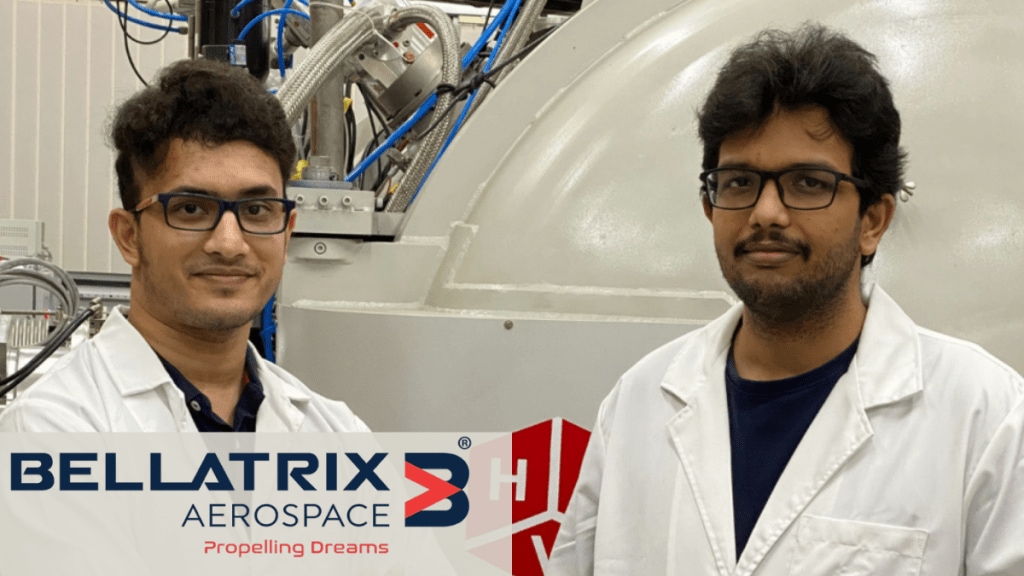Bellatrix Aerospace Co-Founder Rohan Ganapathy’s life took a huge turn in his second year of college (he is an aeronautical engineer from Hindustan College in Coimbatore) in 2012 when he developed a unique concept for an electric propulsion system that could use water as fuel. That idea took him all the way to NASA, where he presented a paper.
“It was a surreal experience. I met my childhood heroes, Neil Armstrong and Buzz Aldrin, and those conversations left a deep imprint on me. When I returned, the story of a ‘local boy meeting Neil Armstrong’ made it to the newspapers, and it caught the attention of Dr A.P.J. Abdul Kalam,” Ganapathy, also the CEO and CTO of Bellatrix Aerospace, recalls. Dr Kalam not only appreciated the work but also gave him a recommendation letter, which helped secure his first grant from JSW Steel.
From shed to space
Till then, Ganapathy, now 33, wanted to become a professor in propulsion. “I wanted to do PhD from an Ivy League university, and spend my life teaching and researching. But I became what I like to call an accidental entrepreneur.”
Back in college, he had already built the technical team, but he knew he needed someone who could take charge of the business side. Ganapathy shared the idea with his family friend, Yashas Karanam, now co-founder and COO at Bellatrix, who was then still studying in high school in Mysore. But, from the moment they spoke, Karanam, now 31, was all in. “Choosing a co-founder is a bit like choosing a life partner; you need shared vision, trust, and equal passion. With Yashas, I found exactly that.”
With the first grant, the co-founders set up a small shed in Coimbatore and worked late nights to bring the concept to life. “This is a field where physics and mathematics are at the core, and even computer simulations don’t always give you reliable answers, so that meant teaching ourselves advanced concepts and learning by doing,” he says.
Betting on green propulsion
The idea went through 130 experiments before they got it right. This is because, in space, there are numerous parameters that can affect the spacecraft, and anything can go wrong. So, the product had to be flawless and meticulously designed.
But that process taught them how hard it is to build something truly reliable and gave them an early lesson in building a resilient company. Also, luckily, this was the time when space was being democratised and was no longer limited to a handful of national agencies. Conversations were also shifting towards safer, more efficient fuels. This validated their belief in cleaner chemical propellants and, increasingly, electric propulsion and gave them the confidence to move forward.
The turning point came when Karanam met Kiran Kumar, the then chairman of ISRO, at his super seniors’ convocation and showed him the test results, graphs and photos of their recent project, where they had successfully ignited the thruster for the very first time. Kiran Kumar was intrigued as this was a niche technology that even ISRO was exploring, and he told them he would be happy to help. After further discussions, ISRO decided to place an order for Bellatrix’s water-based thruster. The only catch was that they needed to be an officially registered company to accept it. And that’s how Bellatrix Aerospace was formally born in 2015.
Bellatrix’s first office was a factory shed in Coimbatore. When they later moved to Bengaluru, they needed a proper R&D setup, so they approached the Indian Institute of Science (IISc) for incubation. It was a tiny room, less than 100 square feet, where only four people could squeeze in. Bellatrix has now grown to over 40,000 square feet across three locations in Bengaluru. In FY25, the startup’s operational revenue was close to $1 million and for FY26, it is eyeing a 4X growth. The spacetech startup is also targeting profitability within the next three years.
But the biggest challenge in building something for space was that there was no room for error. “There’s no sending someone up to service it, so the product has to be perfect from the start,” he says. Being the first mover, the co-founders had to equip themselves with every capability needed to compete on a global scale, including design, manufacturing and testing. Ganapathy calls it a ‘first mover disadvantage’. “Back in 2012, we were one of the first companies in the field. Today, there are over 300,” he says.
Bellatrix is the first company in India to develop high-performance green propulsion alternatives and integrated heater-less hollow cathodes in hall-effect thrusters for commercial use globally. The team has also won two national awards, from the President and the Prime Minister, for indigenising a crucial technology for satellite that was previously imported. The firm has also expanded to Delaware and has partnered with Astroscale Japan for its propulsion solutions. Bellatrix Aerospace has raised a total funding of $12.6 million so far and is backed by investors such as BASF Venture Capital GmbH, Inflexor Ventures, StartupXseed Ventures, and Parampara Capital.

